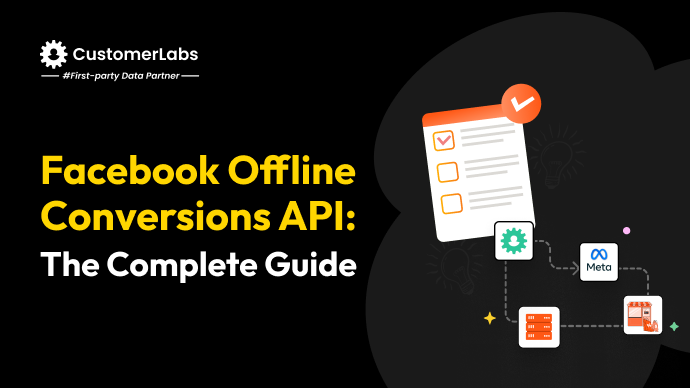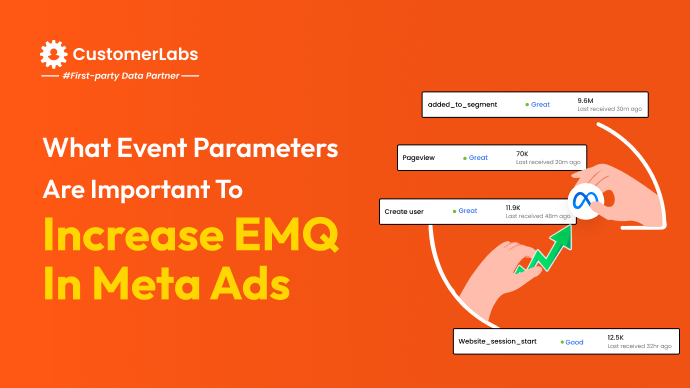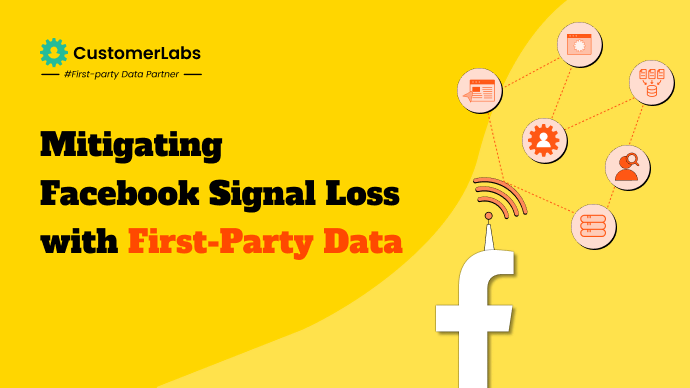Meta Advantage+ Shopping campaigns (Meta ASC) are automated campaigns designed by Meta for performance marketers who want to drive online sales. It uses machine learning algorithms to facilitate the full-funnel strategy, covering both the acquisition of new customers and the retargeting of existing visitors.
But, marketers are more interested in the effectiveness of the Facebook Advantage+ Shopping campaigns. Some marketers who tried the Advantage shopping campaign have seen better results compared to their BAU (business as usual) campaigns whereas others whine that the Meta ASC is a letdown and does not work at all.
Since it’s new and evolving, marketers are unclear about the best practices to be followed with Meta ASC to see good results. To clear this all up, I am gonna list down 12 proven best practices for optimizing Advantage+ Shopping campaigns.
Meta ASC best practices to optimize the ad campaigns
1. Don’t just optimize for the purchase event
Meta ASC campaigns now allow you to optimize for any custom event of your choice. It is a feature that was previously unavailable but is now at your disposal.
Category based optimization
You can segment and send category-based purchases to Meta to optimize your ad campaigns for specific categories.
For instance, imagine you’re selling three different categories of clothes on your e-commerce site: shirts, skirts, and tops. And let’s assume shirts were the top sellers. If you optimize your ad campaign with the generalized purchase event data, you might see poor campaign performance for tops or skirts due to the dominance of shirt purchases.
So, what you have to do is segment your purchase event data into distinct categories of shirts, skirts, and tops and send them to Meta Ads.
- To optimize for skirts you should send all the skirt purchase event data to Meta Ads.
- To optimize for tops you should send all the top purchase event data to Meta Ads.
- To optimize for shirts you should send all the shirt purchase event data to Meta Ads.
By doing so Meta will be able to optimize the campaigns for skirts, tops, and shirts individually, based on the specific purchase data for each category.
Average Order Value based optimization
If you want to optimize for high order value purchases send similar high-AOV purchase events to Meta. This enables Meta to fine-tune your ad campaign to attract more high-AOV purchase events.
You can also combine optimization approaches
Marketers can combine different variations of combinations that suit their business to optimize ad campaigns. For one, you can optimize the ad campaigns by combining AOV-based and category-based approaches or you can combine cross-sell and AOV-based approaches.
To give you an example, by combining AOV-based and category-based approaches you can optimize your ad campaign for higher order value shirts.
Unfortunately, native platforms like Shopify don’t inherently support category-wise or AOV-based purchase event optimization, which is one of the best practices for using Meta’s Advantage+ Shopping Campaigns. That’s where CustomerLabs 1PD OPs come in handy. Using CustomerLabs you can enable optimization for different types of conversion events, whether category-based, AOV-based, or a blend of both.
Note: As a standard practice, a minimum of 50 conversions per campaign per week are recommended for the algorithms to work better and scale the campaigns. Suppose if you’re falling short on the 50 conversions for a particular purchase event you can optimize for other higher funnel stages like add payment info, initiate checkout, add to cart, add to wishlist, or even view content—whatever aligns with your campaign objectives.
By using these upper stages of the funnel, you can achieve the 50 conversion threshold mark and optimize the ad campaign for final conversion.
2. Setup Conversions API
Meta Advantage shopping campaigns are AI-driven campaigns and they need high-quality data to train the ad algorithms for better performance. So to send data to Meta on the server side without any signal loss, you need to set up Conversions API (CAPI).
Meta ASC and CAPI are a powerful combo as Meta says that “by setting up Conversions API you can optimize audience targeting and consequently lower the cost per result by an additional 4% in ASC campaigns”

3. Optimize for the value of conversions
Always include the conversion value along with the data you send so that Meta will be able to use that value to optimize ad campaigns and get you better results.
Advantage plus shopping campaign allows marketers to maximize the value of conversions. You can do that by choosing “Maximize value of conversions” in the performance goal option. Additionally, you can set a Minimum ROAS (Return on Ad Spend) which is nothing but the revenue you’d like to get for each dollar you spend on ads.


To give you an idea, let’s assume you set the Minimum ROAS as 4x which means the goal is to generate $4 in revenue for every $1 spent on ads.
This way you’ll end up getting higher-value conversions and achieve a lower cost-per-result target by following the recommended practice in your ASC campaigns to maximize conversion value setting with minimum ROAS.
Note: Make sure you set a realistic minimum ROAS that you know can be achieved.
4. Ad creatives
Meta ASC lets you test up to 150 ad creatives. You can mix static images, videos, and catalog ads all within a single campaign to see what works and what doesn’t.
All you have to do is feed every creative you have into Meta ASC and let the ad algorithm decide which combination of ads performs best for which audience. This way, the ad algorithm will test multiple combinations and creatives on different audiences.
For instance, if a certain audience responds well to a specific combination, it will show similar ones to them. If they don’t respond well, the algorithm will adjust and find a combination that works better for them.
5. Ad budget
Many people get confused about the minimum ad budget to set. To avoid this confusion, and as a best practice, you can base your budget on your average cost per conversion.
For that, plan your ad budget in a way so that you get 50 conversions per campaign, per week (because Meta recommends 50 conversions per campaign per week). So if you have a desired cost-per-result/cost-per-action (CPA), multiply that CPA by 50 and divide it by seven. The result is the budget you should set to get your Advantage shopping campaigns started.
Let me spell it out with an example:
Let’s say you want to spend not more than $10 per purchase from your ads.
Now, multiply that $10 by 50 because you want to get 50 sales each week. That gives you $500
Divide that $500 by 7 (the number of days in a week) which gives you about $71.42.
So, you can set your minimum advertising budget to around $71.42 per day.
Note: Ensure you calculate and set your budget adjustments before launching the A+SC campaigns. Changing the budget once the campaign is live will push the ad algorithm back into the learning phase, which isn’t ideal.
6. Budget scheduling
Budget scheduling in the Advantage+ shopping campaigns gives you more control over the budget during key promotional events.
For instance, if you’re running a campaign for 1 month, and in the last week you have planned a promotional sale. Now, you can set a start and end time for that particular period and increase your budget during that time. This way, Meta will be able to expand its audience reach during the scheduled period with higher budgets.
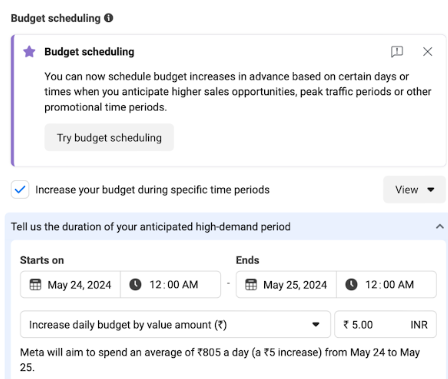
So, use budget scheduling to increase the budget on important sales days and less on trivial ones.
7. Budget split for retargeting & prospecting
You can split your ad budget into two parts, one for retargeting existing customers and another for prospecting new customers.
To do that use the check box under Budget & schedule for existing customer budget cap where you can limit the budget you want to spend on retargeting.
For example, if you set a 30% budget cap for existing customers, not more than 30% of the campaign’s budget will go to retargeting. The remaining 70% will be used for prospecting. This is the best practice for splitting the budget between retargeting and prospecting.
However, depending on your business goals, you can adjust this. If you want to focus entirely on prospecting, set the existing customer budget cap to 0%. Likewise, if you want to focus completely on retargeting, set the budget cap to 100%.
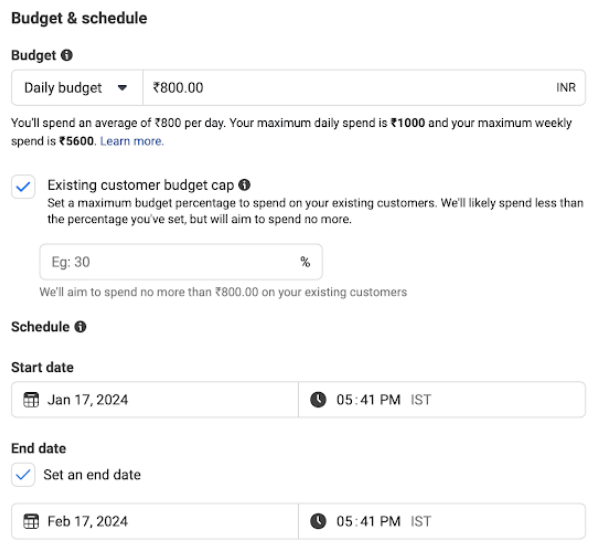
For Meta to differentiate between existing customers and new prospects, you have to add the list of existing customers under the Audience Segments in Advantage shopping campaigns. This way, Meta will spend the percentage of the budget set in the budget cap on existing customers and the remaining budget on new customers.
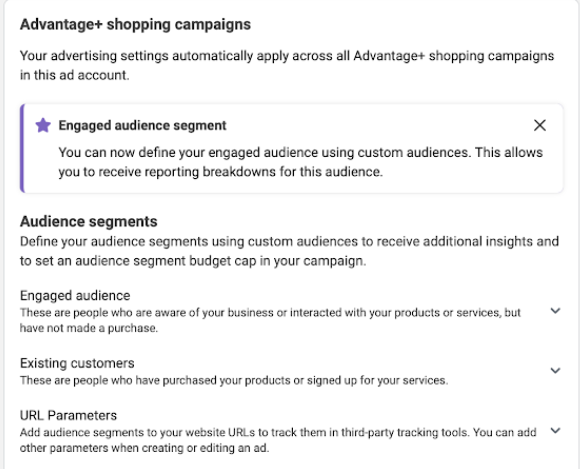
8. One campaign one country
With advantage shopping campaigns it’s a best practice to select one country per campaign. Choosing one country will increase the likelihood of the ad algorithm to better understand users’ behaviors, interests, and patterns so that Meta can reach potential customers and increase purchases.
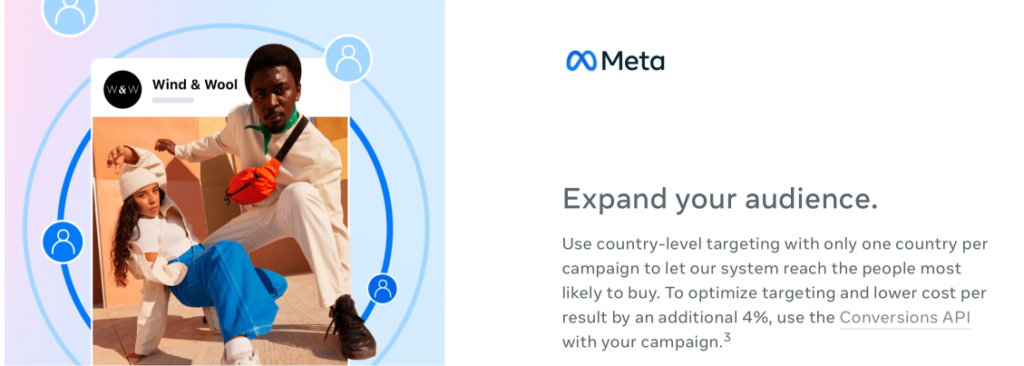
9. Placement control
Meta Advantage shopping campaigns don’t offer placement controls directly within the campaign settings. Yet, you can set up placement control at the ad account level for managing your ad placements.
Keep in mind that this exclusion will apply not just to your ASC but across all the campaigns in your ad account. So, if you decide to exclude a specific placement, it will affect all your advertising efforts under that account.
For instance, some marketers have an opinion that the Meta Audience Network generates junk leads or traffic. So, if you think some placements are unnecessary or troublesome you can choose to exclude it at the ad account level.
10. Conversion location
According to Meta, choosing “web and shop” as your conversion location in an Advantage shopping campaign will lead to better ad campaign performance.
So if you have an offline store and website choose “web and shop”.
If you have an offline store, app, and website choose “web and shop” or “web and app”, not “shop and app.”
If you have just a website, choose “website.”
11. URL Parameters
With Meta ASC campaigns, you can set URL parameters at the ad account level to define your existing customers, engaged audiences, and new customers. By doing this, you can effectively track and calculate metrics such as nCAC (new customer acquisition cost).
Setting up URL parameters not only helps you identify and reach new audiences but also provides valuable insights into the acquisition costs for these particular audiences. It also reports the number of conversions from existing customers, engaged audiences, and new customers.
With this feature marketers can better understand the costs of attracting new customers, allowing them to fine-tune their campaigns for different types of audiences and get more bang for their buck.
12. A/B testing
Last of all, Meta Advantage shopping campaigns give you the opportunity to experiment and test their performance against your BAU (business as usual) campaigns. This is the best way to find out if Meta Advantage+ shopping campaigns are suitable or not for your business. You can follow the Meta ASC best practices mentioned above and test out the campaigns to see if they work for you.
Proven ASC Campaigns
Marketers who adhered to these best practices and invested over $1 Million into Meta A+SC campaigns are singing their praises.
Below are the mind-blowing results they’ve seen!
- They’re seeing a whopping 4x increase in conversion rates compared to the usual BAU campaigns.
- They’re dodging ad fatigue and ad frequency left and right thanks to the 150+ ad creative combos at play like images, videos, catalogs, etc.
- They’ve also seen reduced cost per action (CPA) by 17% and a sweet bump of 32% in ROAS.
All this success is proof that good data and following the best practices with ASC campaigns pay off big time.
To wrap up
Advantage+ Shopping Campaigns are in for a long haul and it’s unfair that some marketers miss out on it thinking that ASC is just for retargeting. If you’re one of them, know that ASC offers a complete approach, combining retargeting and prospecting in one campaign which is essential for every marketer’s digital marketing strategy.
Even though it might seem like you have less control over the audience, the AI magic behind ASC knows how to make those ad creatives lure the audience with the right data. So, invest in gathering high-quality first-party data and sync it up with Meta Ads.
Moreover, Meta’s been rolling out some cool updates lately. It gives audience control and audience targeting like upping the age limit for targeting from 18 to 25. Likewise, Meta ASC is also evolving day by day, so stay quick and flexible to adapt to those changes and witness your revenue shoot up.
Finally, don’t forget to throw some A/B testing into the mix to see what really clicks with your audience. Experiment, adapt, and watch those results roll in.

